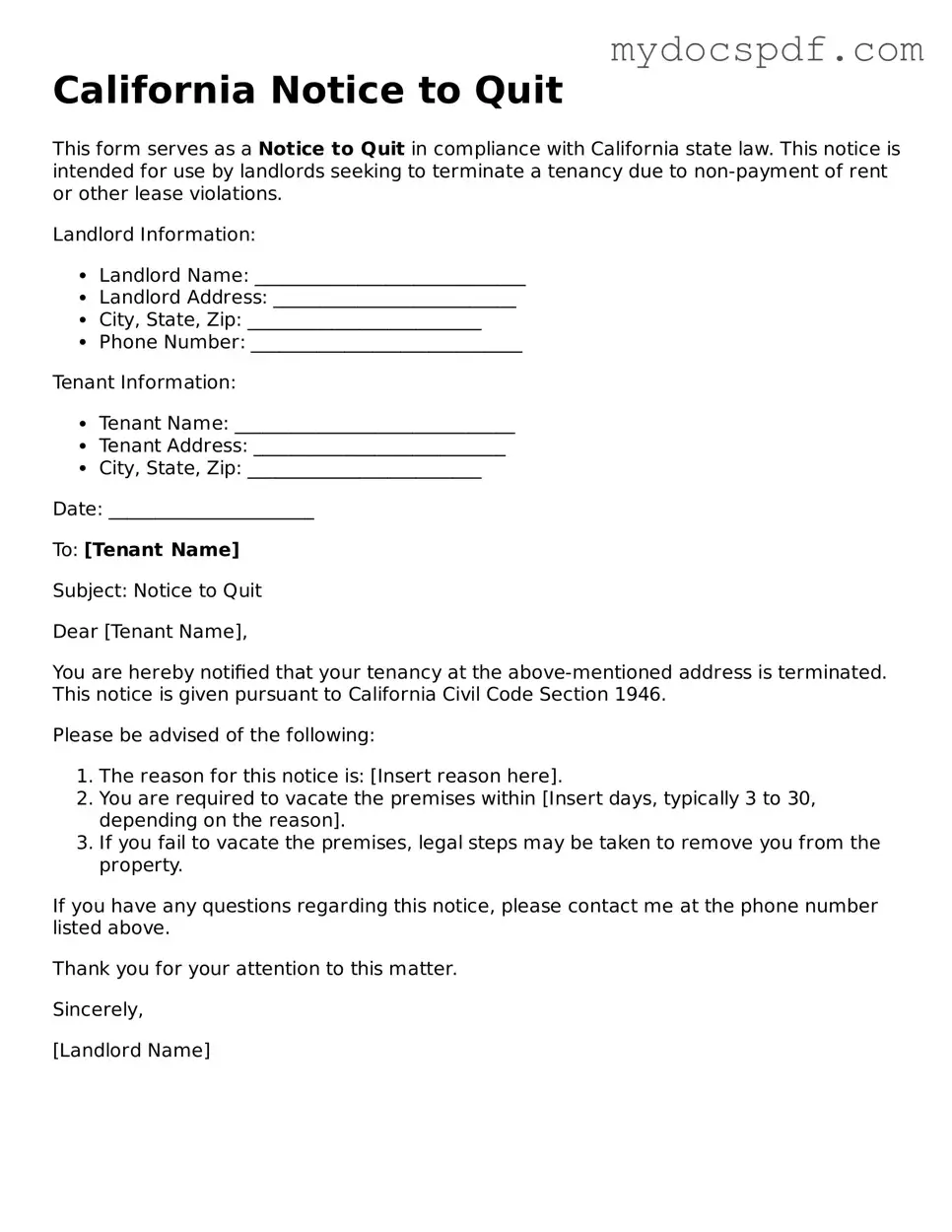California Notice to Quit
This form serves as a Notice to Quit in compliance with California state law. This notice is intended for use by landlords seeking to terminate a tenancy due to non-payment of rent or other lease violations.
Landlord Information:
- Landlord Name: _____________________________
- Landlord Address: __________________________
- City, State, Zip: _________________________
- Phone Number: _____________________________
Tenant Information:
- Tenant Name: ______________________________
- Tenant Address: ___________________________
- City, State, Zip: _________________________
Date: ______________________
To: [Tenant Name]
Subject: Notice to Quit
Dear [Tenant Name],
You are hereby notified that your tenancy at the above-mentioned address is terminated. This notice is given pursuant to California Civil Code Section 1946.
Please be advised of the following:
- The reason for this notice is: [Insert reason here].
- You are required to vacate the premises within [Insert days, typically 3 to 30, depending on the reason].
- If you fail to vacate the premises, legal steps may be taken to remove you from the property.
If you have any questions regarding this notice, please contact me at the phone number listed above.
Thank you for your attention to this matter.
Sincerely,
[Landlord Name]
